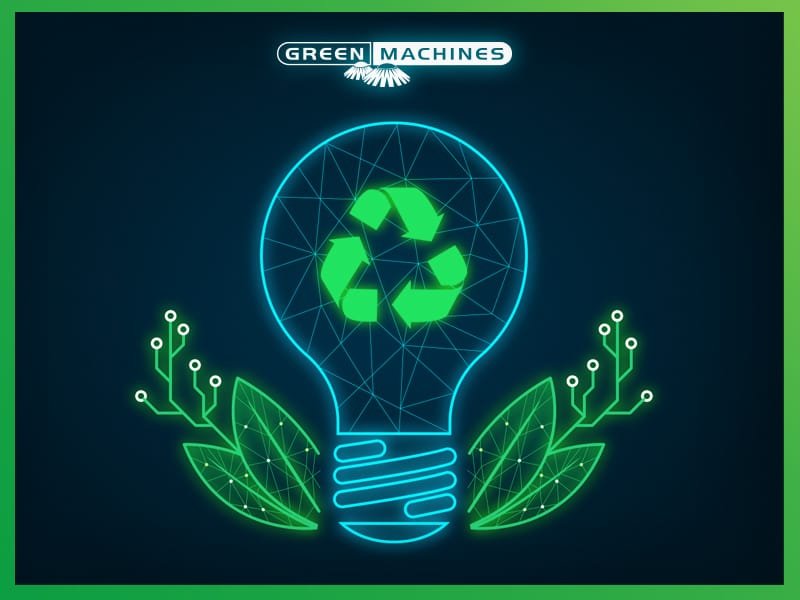As the world grapples with climate change and environmental degradation, green technologies are emerging as critical tools for building a sustainable future. In 2024, advancements in renewable energy, waste management, and resource efficiency are set to transform industries and reduce our ecological footprint. This blog post explores the top green technologies driving sustainability in 2024, backed by data and real-world examples, to help businesses and individuals make informed decisions.

1. Solar Power Innovations
Solar energy continues to dominate the renewable energy landscape, with technological advancements making it more efficient and affordable. In 2024, solar power will play a pivotal role in reducing carbon emissions and achieving energy independence.
- Fact: The International Energy Agency (IEA) predicts that solar energy could account for 60% of global renewable energy growth by 2024.
- Example: Perovskite solar cells, a next-generation technology, are achieving higher efficiency rates at lower costs compared to traditional silicon-based cells.
Why It Matters: Solar power reduces reliance on fossil fuels and lowers greenhouse gas emissions. However, challenges like energy storage and land use must be addressed to maximize its potential.
2. Wind Energy Expansion
Wind energy is another key player in the transition to clean energy. In 2024, offshore wind farms and advanced turbine technologies will drive significant growth in this sector.
- Fact: According to the Global Wind Energy Council, global wind energy capacity is expected to reach 1,123 GW by 2024, up from 743 GW in 2020.
- Example: Floating wind turbines, which can be deployed in deeper waters, are unlocking new opportunities for offshore wind energy production.
Why It Matters: Wind energy is a reliable and scalable source of renewable power. However, its environmental impact on wildlife and marine ecosystems requires careful consideration.
3. Energy Storage Solutions
Energy storage is essential for balancing supply and demand in renewable energy systems. In 2024, advancements in battery technology will enhance the efficiency and reliability of energy storage solutions.
- Fact: BloombergNEF estimates that the global energy storage market will grow to 741 GWh by 2024, driven by declining battery costs.
- Example: Solid-state batteries, which offer higher energy density and faster charging times, are poised to revolutionize the energy storage industry.
Why It Matters: Effective energy storage ensures a stable power supply, even when renewable sources like solar and wind are intermittent. However, the environmental impact of battery production and disposal must be managed responsibly.
4. Green Hydrogen
Green hydrogen, produced using renewable energy, is gaining traction as a clean alternative to fossil fuels. In 2024, it will play a crucial role in decarbonizing industries like transportation and manufacturing.
- Fact: The Hydrogen Council projects that green hydrogen could meet 18% of global energy demand by 2050, with significant growth expected by 2024.
- Example: Countries like Germany and Japan are investing heavily in green hydrogen infrastructure to support their energy transition goals.
Why It Matters: Green hydrogen has the potential to replace fossil fuels in hard-to-abate sectors. However, high production costs and infrastructure challenges remain barriers to widespread adoption.
5. Circular Economy Technologies
The circular economy focuses on minimizing waste and maximizing resource efficiency. In 2024, technologies that enable recycling, upcycling, and waste reduction will gain prominence.
- Fact: The Ellen MacArthur Foundation estimates that transitioning to a circular economy could generate $4.5 trillion in economic benefits by 2030.
- Example: Chemical recycling technologies are transforming plastic waste into valuable raw materials, reducing the need for virgin plastics.
Why It Matters: Circular economy technologies reduce environmental pollution and conserve natural resources. However, scaling these solutions requires collaboration across industries and governments.
6. Carbon Capture and Storage (CCS)
Carbon capture and storage (CCS) technologies are critical for reducing greenhouse gas emissions from industrial processes. In 2024, CCS will become more accessible and cost-effective.
- Fact: The Global CCS Institute reports that global CCS capacity is expected to increase by 50% by 2024, driven by government incentives and corporate commitments.
- Example: Companies like Chevron and Shell are investing in CCS projects to capture and store carbon emissions from their operations.
Why It Matters: CCS can significantly reduce emissions from industries like cement and steel production. However, concerns about long-term storage safety and high costs must be addressed.
7. Smart Grids
Smart grids use digital technology to optimize electricity distribution and consumption. In 2024, they will play a key role in integrating renewable energy sources and improving grid reliability.
- Fact: Navigant Research predicts that global smart grid investment will reach $70 billion by 2024.
- Example: Advanced metering infrastructure (AMI) and real-time data analytics are enabling utilities to manage energy demand more efficiently.
Why It Matters: Smart grids enhance energy efficiency and support the transition to renewable energy. However, cybersecurity risks and high implementation costs are challenges that need to be addressed.

8. Electric Vehicles (EVs)
The electric vehicle (EV) market is booming, driven by advancements in battery technology and government incentives. In 2024, EVs will become more affordable and accessible, accelerating the shift away from fossil fuel-powered vehicles.
- Fact: BloombergNEF forecasts that global EV sales will reach 10 million units by 2024, up from 3.1 million in 2020.
- Example: Companies like Tesla and Volkswagen are leading the charge with innovative EV models and expanded charging infrastructure.
Why It Matters: EVs reduce air pollution and dependence on fossil fuels. However, the environmental impact of battery production and charging infrastructure development must be managed sustainably.
9. Vertical Farming
Vertical farming, which involves growing crops in stacked layers, is revolutionizing agriculture by reducing land use and water consumption. In 2024, this technology will gain traction as a sustainable solution for urban food production.
- Fact: Grand View Research estimates that the vertical farming market will grow to $12.77 billion by 2026, with significant growth expected by 2024.
- Example: Companies like AeroFarms and Plenty are using vertical farming to produce fresh, locally grown produce with minimal environmental impact.
Why It Matters: Vertical farming addresses food security and reduces the environmental footprint of agriculture. However, high energy costs and scalability remain challenges.
10. Biodegradable Materials
Biodegradable materials are replacing traditional plastics and other non-biodegradable substances, reducing environmental pollution. In 2024, innovations in this field will drive widespread adoption across industries.
- Fact: The global biodegradable plastics market is projected to reach $6.12 billion by 2024, according to MarketsandMarkets.
- Example: Companies like BASF and NatureWorks are developing biodegradable packaging materials that decompose naturally without harming the environment.
Why It Matters: Biodegradable materials reduce plastic waste and pollution. However, ensuring proper disposal and composting infrastructure is essential for their effectiveness.
Conclusion
The green technologies driving sustainability in 2024 offer immense potential to address environmental challenges and create a more sustainable future. From renewable energy and circular economy solutions to electric vehicles and biodegradable materials, these innovations are transforming industries and reducing our ecological footprint.
To fully realize their benefits, businesses, governments, and individuals must collaborate to overcome challenges like high costs, scalability, and infrastructure development. By embracing these technologies, we can build a greener, more sustainable world for generations to come.
Call to Action: Which green technology do you think will have the biggest impact in 2024? Share your thoughts in the comments below, and don’t forget to subscribe for more insights on sustainability and innovation.

